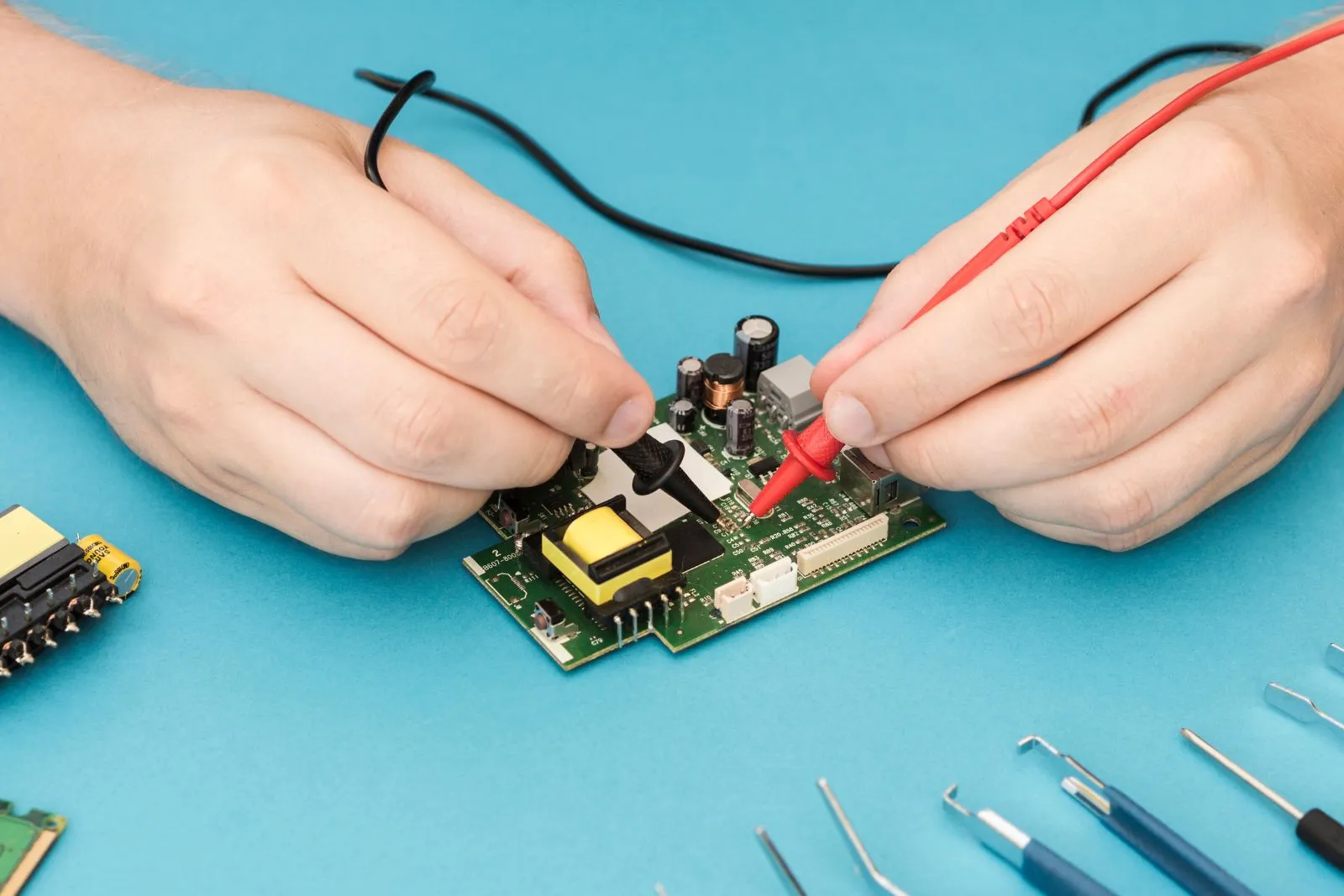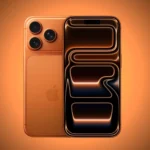Understanding the world of electronic devices and circuits is the first step toward mastering how modern technology operates.
From smartphones and computers to household appliances and industrial robots, every electronic gadget relies on circuits that control the movement of electric current.
Whether you are a student, hobbyist, or beginner, learning about these systems opens the door to creating and understanding the devices we use every day.
This complete guide explains the basics of electronic devices and circuit design in a simple, practical way.
You’ll learn about current flow, important laws, and how small components like resistors and capacitors come together to form useful systems.
By the end, you’ll have a solid foundation in electronics and the confidence to start small projects or pursue deeper studies in this fascinating field.
What Are Electronic Devices?
Electronic devices are components or systems that control and process electrical energy to perform a specific function.
They transform electrical signals into meaningful actions, such as lighting a bulb, amplifying sound, or displaying an image on your phone.
At the heart of every electronic device lies a combination of active and passive components — each playing a unique role in managing electric signals.
Understanding these basic building blocks is essential for learning how circuits operate.
Active vs Passive Components
Active components are devices that control the flow of electricity and can amplify or switch signals. Common examples include transistors, diodes, and integrated circuits (ICs).
They require an external power source to operate and form the functional core of most modern electronic systems.
Passive components, on the other hand, cannot generate energy but are vital for controlling voltage and current. Examples include resistors, capacitors, and inductors.
Together, these elements create balanced electrical networks that manage signal strength, timing, and stability.

Semiconductor Devices and Electromechanical Elements
Modern electronics would not exist without semiconductor devices. These materials bridge the gap between conductors (like copper, which allows electricity to flow freely) and insulators (like rubber, which blocks current).
Semiconductors have the special property of controlling electrical conductivity under certain conditions — making them ideal for building active electronic components such as diodes, transistors, and integrated circuits (ICs).
What Are Semiconductors?
Semiconductors are materials—most commonly silicon and germanium—whose electrical properties can be modified by adding impurities, a process called doping.
This controlled alteration creates two types of regions:
- N-type (Negative-type): Rich in free electrons (negative charge carriers).
- P-type (Positive-type): Contains “holes” or missing electrons (positive charge carriers).
When P-type and N-type materials are joined together, they form PN junctions, which are the foundation of nearly all semiconductor components.
These junctions allow current to pass in one direction while blocking it in the other, enabling the creation of devices like diodes and transistors.
Common Semiconductor Devices
Let’s look at the key semiconductor components that form the backbone of electronic devices and circuits:
1. Diodes
A diode is a simple two-terminal device that permits current flow in one direction only. It’s commonly used for rectification (converting AC to DC), signal clipping, and voltage regulation.
Light-emitting diodes (LEDs) are special diodes that emit light when current passes through them, making them useful in indicators, displays, and lighting.
2. Transistors
A transistor is often called the “heart of electronics.” It can amplify signals and act as a switch. There are two main types:
- Bipolar Junction Transistor (BJT) – controls current using both electrons and holes.
- Field Effect Transistor (FET) – controls current using an electric field, making it ideal for low-power digital circuits.
Transistors are found in everything from computers and radios to industrial control systems, forming the core of logic gates and processors.
3. Integrated Circuits (ICs)
An integrated circuit combines multiple electronic components—transistors, resistors, capacitors—on a single microchip.
ICs perform complex tasks like signal processing, memory storage, and system control. Examples include microcontrollers, operational amplifiers, and digital logic chips.
Their small size, reliability, and low cost revolutionized technology, powering modern smartphones, laptops, and medical equipment.
4. Semiconductor Sensors and Power Devices
Modern systems also use semiconductor sensors such as temperature sensors, photodiodes, and motion detectors to monitor real-world conditions.
Power semiconductor devices like MOSFETs and IGBTs manage high voltages and currents in electric vehicles, solar inverters, and power supplies.
How Semiconductors and Electromechanical Devices Work Together
In most real-world systems, semiconductors and electromechanical elements operate side by side. For example:
- A microcontroller (semiconductor) sends signals to a relay (electromechanical) to activate a motor.
- A transistor circuit controls power flow to a solenoid or LED display.
- Sensors detect environmental changes and trigger actuators through logic circuits.
This combination creates intelligent systems — like home automation setups, robotic arms, and industrial controls — where electrical signals lead to real-world physical actions.
Why They Matter in Modern Electronics
Both semiconductor and electromechanical components are the foundation of innovation in technology.
Semiconductors enable miniaturization, speed, and efficiency, while electromechanical devices provide movement, control, and power switching.
Together, they form the backbone of everything from smartphones and smart appliances to satellites and electric cars.
Understanding these two categories helps learners grasp the complete behavior of circuits, bridging theory with hands-on application — an essential step for anyone studying fundamentals of electronics or exploring careers in engineering and automation.
Understanding Circuits: The Basics
An electronic circuit is a closed path that allows electric current to flow. It connects power sources, components, and output devices through wires or conductive tracks.
The purpose of a circuit is to perform a specific task — from powering a lamp to controlling a robot arm.
A circuit usually includes three key elements:
- Power Source: Provides energy (like a battery or power adapter).
- Load: Consumes power to perform work (like an LED or motor).
- Pathway: Wires or conductors that allow current to flow smoothly.
What Is an Electronic Circuit?
In simple terms, an electronic circuit is a system of interconnected components designed to control electric current.
Each part plays a defined role, and the circuit works only when the pathway is complete — known as a closed circuit.
If the path breaks, it becomes an open circuit, and current stops flowing. Circuits can be arranged in various ways depending on the function and type of device being powered.
Open vs Closed Circuits, Series vs Parallel
A closed circuit allows continuous current flow, enabling the device to work. An open circuit breaks the path, stopping the current.
- Series circuits have components connected one after another. The current is the same throughout, but the voltage divides across components.
- Parallel circuits have components connected side by side, maintaining the same voltage across each branch while dividing the current.
Understanding these differences helps in circuit analysis, ensuring correct design and safe operation.
Types of Circuits & Their Functions
Analog Circuits
Analog circuits handle continuous signals, like those found in audio amplifiers or radio systems. They process smooth variations of voltage and current to represent real-world information such as sound and light.
Digital Circuits
Digital circuits work with discrete signals — represented by binary 0s and 1s. These are the foundation of computers, smartphones, and microcontrollers, allowing logic operations and data processing.
Mixed-Signal Circuits & Power Circuits
Some systems combine both analog and digital elements, forming mixed-signal circuits — used in devices like smartphones and sensors.
Power circuits, meanwhile, handle higher currents and voltages for devices such as chargers, power supplies, and electric vehicles.
Key Components in Electronic Circuits
Resistors, Capacitors, Inductors
These are the basic circuit elements found in nearly every system.
- Resistors control current and reduce voltage levels.
- Capacitors store and release energy as needed.
- Inductors resist changes in current and are vital in filters and power supplies.
Diodes, Transistors, Integrated Circuits (ICs)
Diodes allow current to flow in one direction only, preventing damage.
Transistors act as switches or amplifiers and are central to modern electronics.
Integrated Circuits (ICs) combine multiple components into a single chip, powering everything from calculators to complex processors.
Printed Circuit Boards (PCBs) & Wiring
A printed circuit board connects components using copper tracks instead of wires. It simplifies design and makes circuits compact and reliable.
Learning to read a schematic diagram helps beginners build and troubleshoot PCBs effectively.
Designing Electronics & Circuits
Reading Schematic Diagrams
Schematic diagrams are blueprints of electronic circuits. They use symbols to represent components and show how they connect.
Learning to read them helps you understand circuit structure before physically building it.
PCB Layout and Prototyping
A PCB layout organizes all the parts on a board, ensuring proper connections and minimal interference.
Beginners often start with breadboards — reusable platforms for testing designs before final assembly.
Troubleshooting and Testing Tools
Using tools like multimeters, oscilloscopes, and signal generators, you can measure voltage, current, and frequency.
Testing ensures that circuits perform correctly and safely before deployment.
Basic Principles and Laws of Electronics
Voltage, Current, Resistance & Ohm’s Law
Ohm’s Law defines the relationship between voltage (V), current (I), and resistance (R):
V = I × R
This simple formula is the foundation of all basic electronics principles and helps calculate power and energy flow in any circuit.
Kirchhoff’s Laws, Networks & Dividers
Kirchhoff’s Voltage Law (KVL) states that the total voltage in a closed loop is zero, while
Kirchhoff’s Current Law (KCL) states that the total current entering a junction equals the total current leaving it.
Voltage and current divider rules help analyze how current or voltage splits across resistors in series or parallel networks, essential for network analysis and design accuracy.
Real-World Applications of Electronic Devices and Circuits
Consumer Electronics, Telecom, Medical Devices
Everyday devices like TVs, smartphones, and hearing aids rely on electronic systems to work efficiently.
Telecom and medical industries use advanced circuits for communication, imaging, and patient monitoring.
Industrial Automation, Robotics & IoT
In industries, automation circuits control machinery, while robotics uses sensors and microcontrollers for precision.
The Internet of Things (IoT) integrates these circuits into smart homes, wearable tech, and connected vehicles.
Building Your Own Project: A Practical Guide
Beginner Projects and DIY Kits
Learning by doing is the best way to understand electronics. Start with DIY electronic kits, such as LED blinkers, sound alarms, or small robots.
These projects teach how to connect components, use breadboards, and apply circuit fundamentals practically.
From Breadboard to PCB – Step-by-Step
Once you master breadboarding, move to PCB circuit layout for a permanent design.
Software tools like EasyEDA or Proteus help you design, simulate, and print your custom circuit boards for personal or professional projects.
Conclusion
Learning electronic devices and circuits is the foundation of understanding how modern technology works — from simple gadgets to complex automated systems.
By exploring semiconductors, passive components, and circuit principles, beginners can grasp how electricity powers innovation across industries.
This complete guide has covered essential topics, including circuit design, testing, and real-world applications in robotics, IoT, and automation.
With practice, you can progress from basic breadboard experiments to designing advanced printed circuit boards (PCBs).
Whether you’re a student, engineer, or hobbyist, mastering these concepts opens limitless opportunities in electronics, embedded systems, and digital design.
Keep experimenting, keep learning, and you’ll soon transform theoretical knowledge into practical creations that define the future of smart technology.
FAQs
- What are electronic devices and circuits?
Electronic devices and circuits are systems that control and process electrical energy to perform specific functions. - What are the main components of an electronic circuit?
The main components include resistors, capacitors, inductors, diodes, transistors, and integrated circuits. - How do semiconductors work in electronic devices?
Semiconductors control electrical conductivity, allowing current to flow in one direction and enabling switching or amplification. - What is the difference between analog and digital circuits?
Analog circuits use continuous signals, while digital circuits process discrete binary signals (0s and 1s). - How can beginners learn about electronic devices and circuits?
Beginners can start with basic components, breadboard projects, and tutorials to understand how circuits function and interact.














